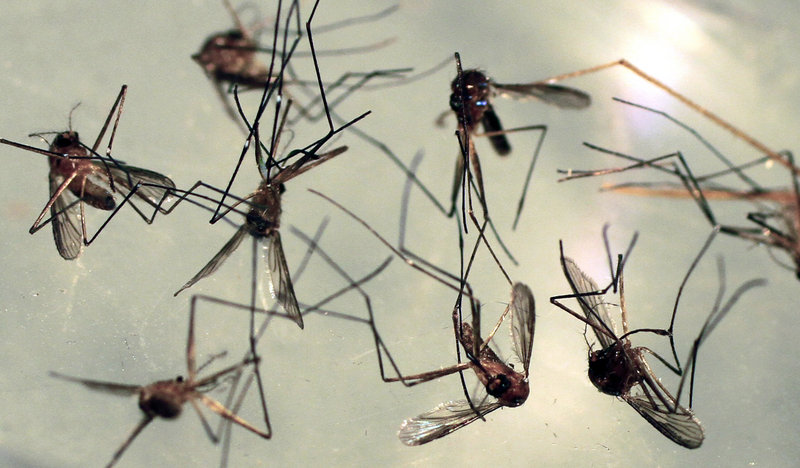PORTLAND – West Nile virus and eastern equine encephalitis are making their annual appearances despite a hot, dry summer that has reduced mosquito populations in much of the Northeast.
West Nile virus is showing up in pools of mosquitoes and in people across the Northeast and across the nation, the Centers for Disease Control and Prevention said. There have been at least nine human cases of EEE, the CDC said, not including an EEE victim who died this week in upstate New York.
Compared with last year, the hot, dry summer has reduced mosquito numbers in many parts of the Northeast, but it hasn’t eliminated mosquito-borne diseases.
On the contrary, the warm spring may have allowed mosquitoes to begin breeding earlier, giving the viruses more time to amplify over the summer, said Roger Nasci, chief of the arboviral diseases branch at the CDC in Fort Collins, Colo.
Maine is the only state in the Northeast to be untouched by EEE and West Nile.
“So far we’ve dodged the bullet,” said Dr. Stephen Sears, state epidemiologist in Augusta. “We’re on the lookout. We’re monitoring continuously.”
There’s plenty of both mosquito-borne viruses elsewhere.
Nationwide, there have been 258 West Nile infections with the greatest number — and all six deaths — occurring in Arizona. New York state has the second-highest number of West Nile infections. The numbers are slightly ahead of last year, but nothing compared with 2002 and 2003, when West Nile swept across the country, Nasci said.
EEE, which is rare but deadly, has infected people in Massachusetts and Rhode Island, in addition to New York, and there’s evidence of the virus in 18 states, Nasci said.
Some places in southeastern Massachusetts, as well as other EEE hotspots including Syracuse, N.Y., have taken to spraying to kill mosquitoes. Some towns, like Middleborough, Mass., have canceled or rescheduled outdoor activities between dusk and dawn to avoid exposing residents to EEE.
Virus transmission start anew each spring.
Over the summer, levels of the virus grow as it’s traded between mosquitoes and birds. Eventually, the number of infected mosquitoes reaches a level high enough to increase the risk of infecting people.
Both diseases have similar symptoms and can be deadly. Severe symptoms can include fever, neck stiffness, headache, disorientation and coma. Neurological effects can be permanent for both.
Maine Health officials advise people to take precautions to avoid mosquito bites by covering up or using insect repellents containing DEET. West Nile and EEE will continue to be a threat until the first frost kills off mosquitoes carrying the viruses.
Send questions/comments to the editors.



Success. Please wait for the page to reload. If the page does not reload within 5 seconds, please refresh the page.
Enter your email and password to access comments.
Hi, to comment on stories you must . This profile is in addition to your subscription and website login.
Already have a commenting profile? .
Invalid username/password.
Please check your email to confirm and complete your registration.
Only subscribers are eligible to post comments. Please subscribe or login first for digital access. Here’s why.
Use the form below to reset your password. When you've submitted your account email, we will send an email with a reset code.